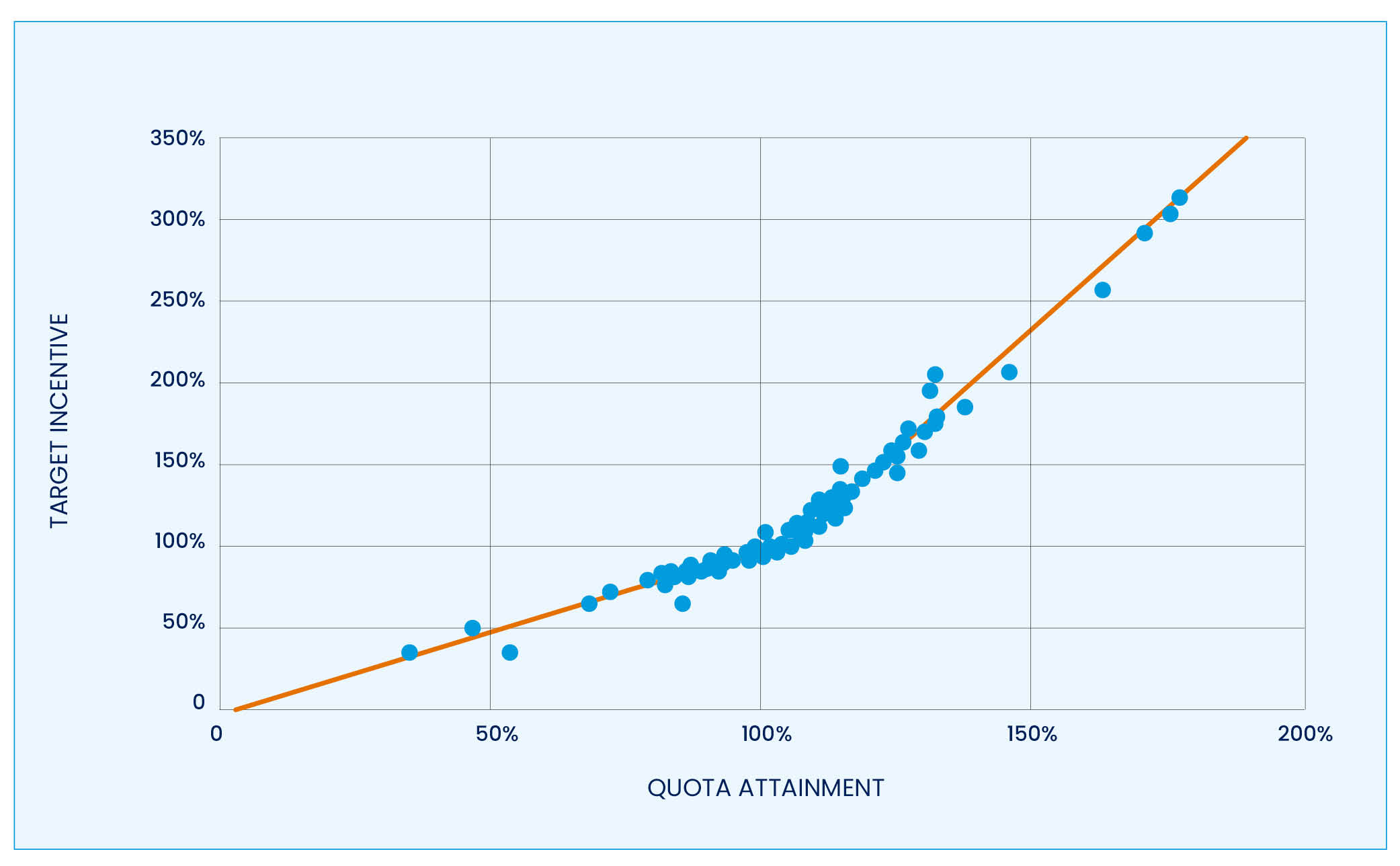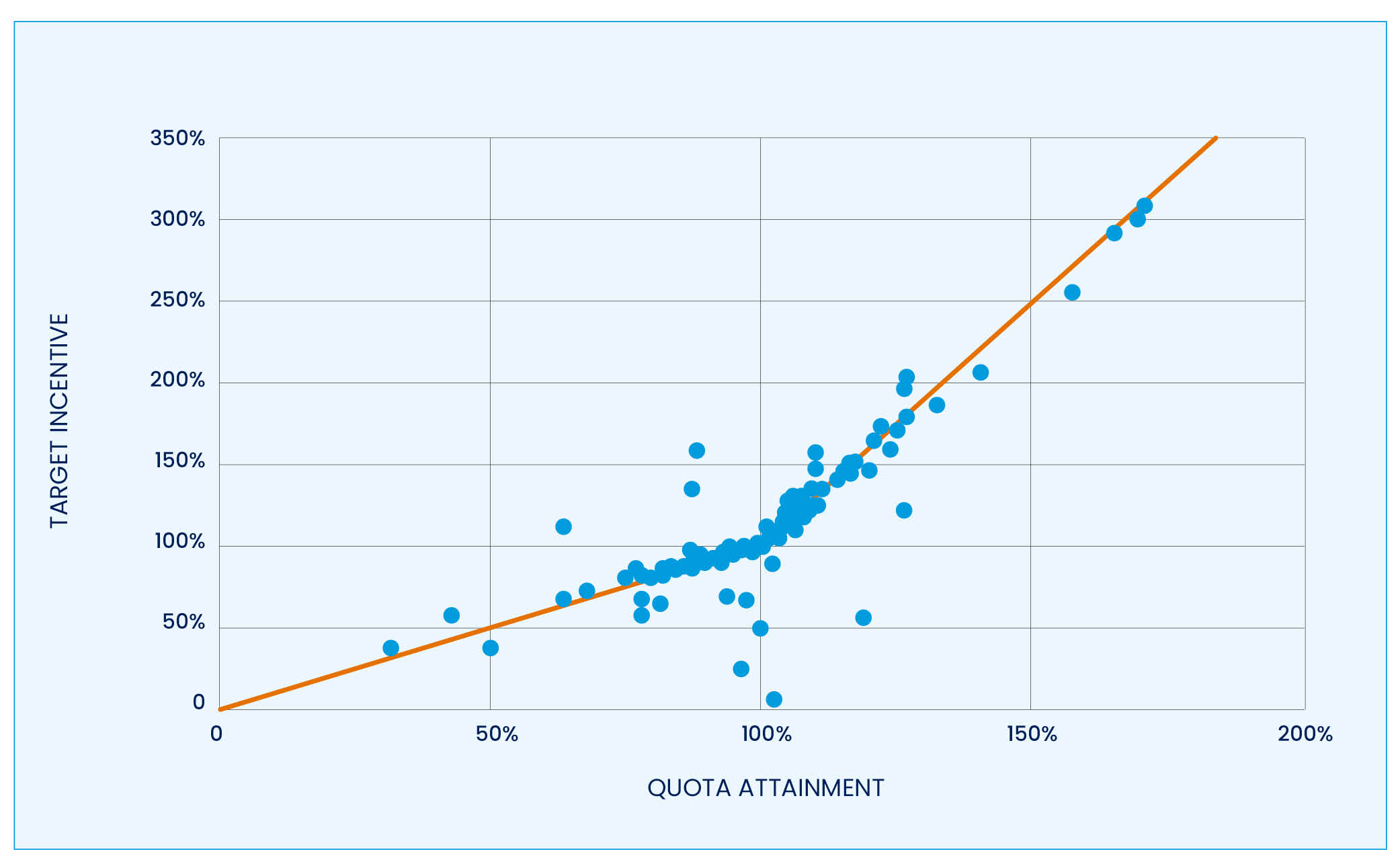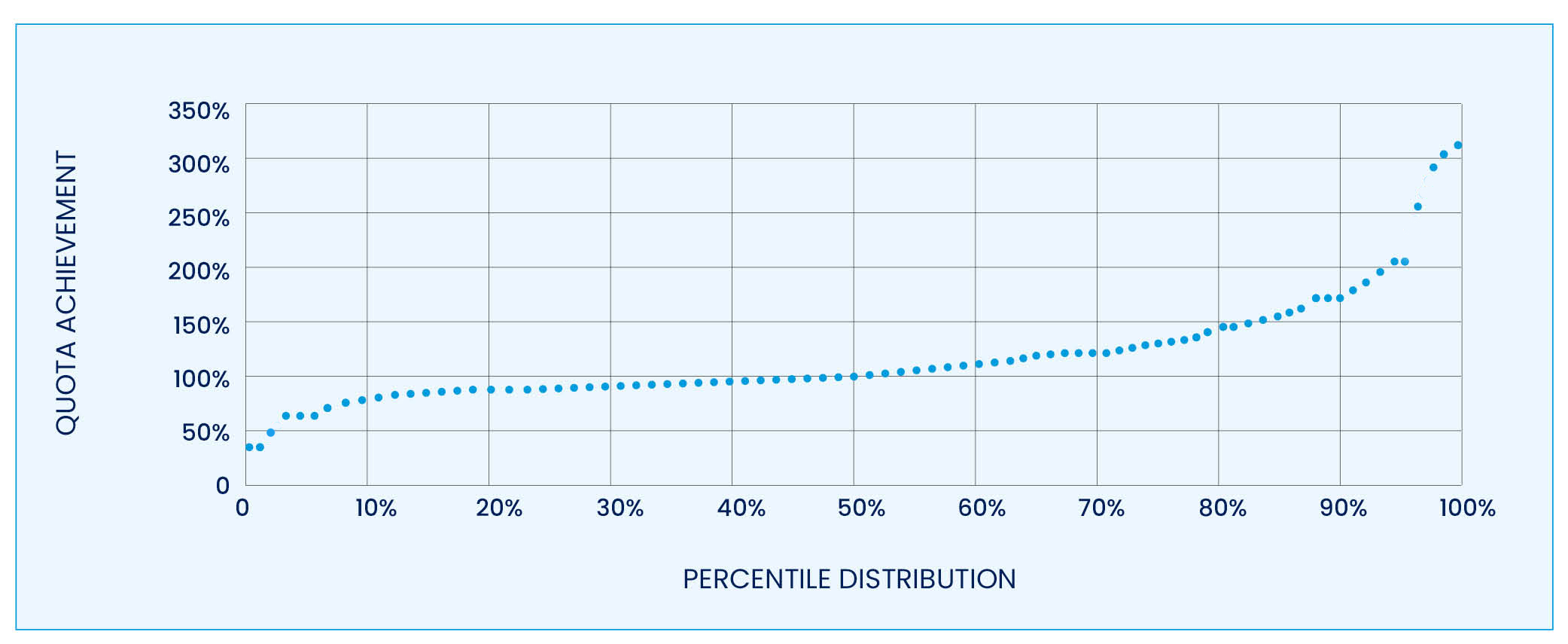- Top organizations conduct health checks. Best-in-class sales organizations consistently conduct mid-year sales compensation program audits, or health checks.
- Three key components. Your mid-year health check should include three key analyses: pay vs. performance correlation, attainment distribution and top performer pay multiple.
- Identify and act. Outliers or unexpected results are a call to action — course-correct the plans for the second half of the year. It’s what best-in-class sales organizations do.
As we approach the midpoint of the calendar fiscal year, it’s time to review your sales compensation program to see if it’s working. Are payouts relative to performance as expected? Is attainment to goals or quotas as forecasted?
Your midpoint assessment, typically a quicker exercise than your annual audit, should include the following three key analyses:
- Pay vs. performance correlation.
- Attainment distribution.
- Top performer pay.
Collecting and organizing the data correctly is a critical first step. The goal is to ensure that your comparisons are like-for-like. Pay attention to, and organize the data by, time and role. Don’t mix ramping reps with the rest and don’t mix jobs (i.e., strategic account manager and inside sales rep should not be part of the same group).
Learn: Sales Compensation Course Series
Depending on the size and breadth of your sales organization, you may want to conduct the three key analyses for sub-groups (i.e., North America reps vs. EMEA reps, or highly tenured reps vs. the rest). With sufficient headcount across sub-groups, you can get quite granular — and informed — about your sales compensation program’s effectiveness across the sales organization at large.
Event: Sales Comp'23 in Chicago
Once you’ve collected and organized the data correctly, let the data speak. Each of the analyses speaks to a different component of your sales compensation program.
Pay vs. Performance Correlation
This scatterplot allows you to visualize the correlation, or relationship, between incentive pay and sales performance and answer some key questions:
- Does better performance yield better pay?
- Are there inconsistencies and gaps between pay and performance?
- Are the plans administered as designed?
- Are there any outliers?
Typical reasons for poor correlation include management overrides in terms of quota or sales credit, quota multipliers (e.g., strategic products retire 1.5x quota), or calculation errors.
Notice the difference between strong and weak correlations below. On the left, greater performance yields greater pay. And the data follows the designed pay curve. On the right, the correlation is not as strong. We have quite a few outliers. While there are many problem areas to investigate on the right, you should start with the group of individuals that are all roughly at 100% of quota attainment with very different payouts.


Attainment Distribution
This cumulative distribution scatterplot allows you to visualize the range of quota achievement across incumbents and answer some key questions. How effective are the quota practices? Do enough salespeople achieve quota? Are performance results predictable or are there performance outliers? Typical reasons for poor results include unrealistic (high or low) quotas, unexpected competitive/market dynamics or talent.
Notice a few key strong points in the scatterplot below. First, about 50% of the salesforce is at or above quota achievement. Next, there is a wide range between your bottom performer (10th percentile) and your top performer (90th percentile). The range associated with these performers is between 79% and 173% of quota achievement. Finally, there are few (or no) outliers — reps blowing out quotas or reps completely missing quotas.

Top Performer Pay Multiple
This ratio of pay for your 90th percentile performer relative to their target incentive allows you to assess how well your plans pay relative to the market. Is the plan too rich or not rich enough? Pay multiples vary by role, geography and company pay philosophy, but broadly speaking, you’re typically looking for a multiple of 2-3x. This means that your top-performing rep (90th percentile) should be able to earn 2-3x their target incentive.
This does not mean that your 95th percentile or 99th percentile rep can’t earn more — they can and typically do. However, most organizations measure the effectiveness of their plans at ranges other than the extremes (e.g., worst-performing rep or best-performing rep).
Typical reasons for poor results include improperly designed pay curves, commission rates and quotas. Too high (or too low) quotas make it too difficult (or too easy) for top performers to hit their targets. Too high (or too low) pay curves or commission rates make it too rewarding (or not rewarding enough) for top performers who do hit their targets.
Identify and Act
Each of the three analyses provides insight into different aspects of your sales compensation program. Is it working or not? Or even more specifically, for which populations of the salesforce is it working or not?
Outliers or unexpected results are a call to action — course-correct the plans for the second half of the year. It’s what best-in-class sales organizations do.
Editor’s Note: Additional Content
For more information and resources related to this article see the pages below, which offer quick access to all WorldatWork content on these topics:




